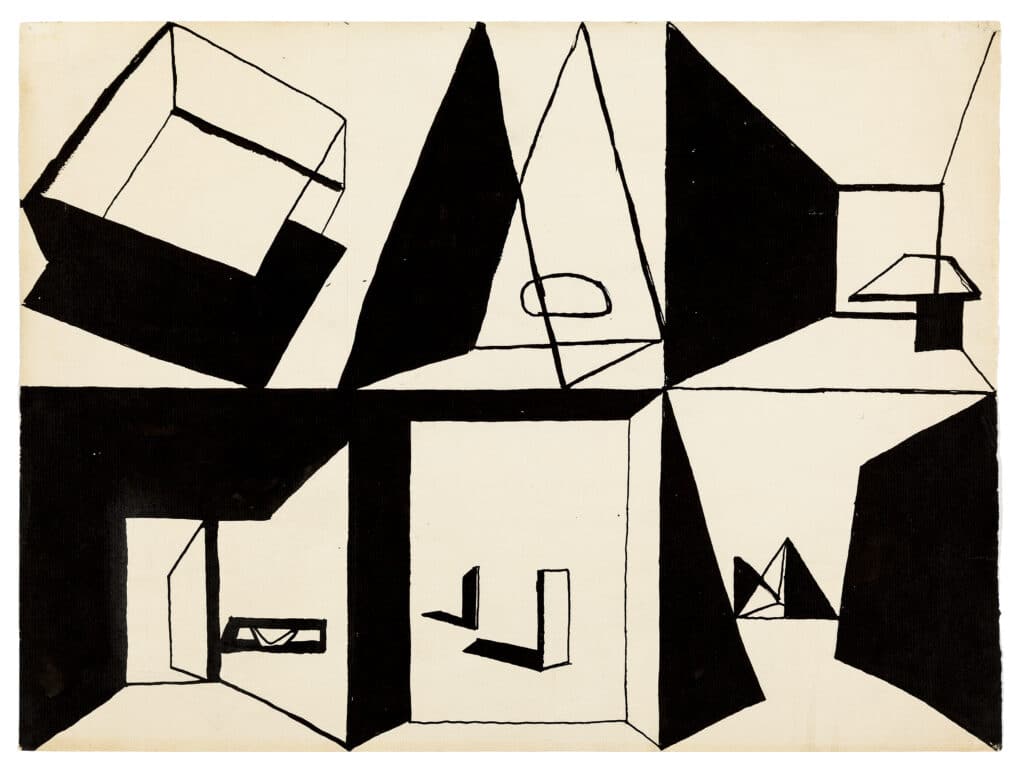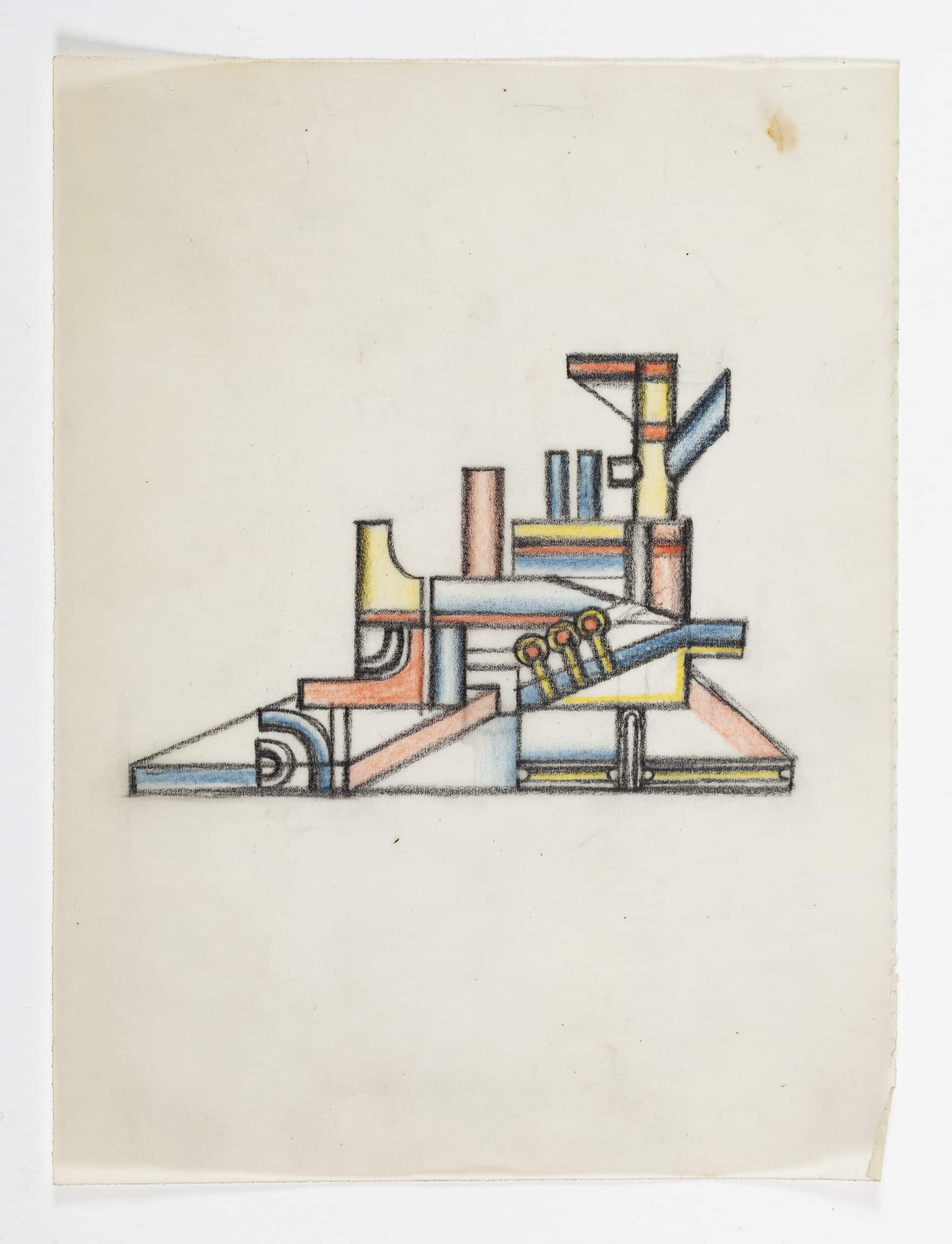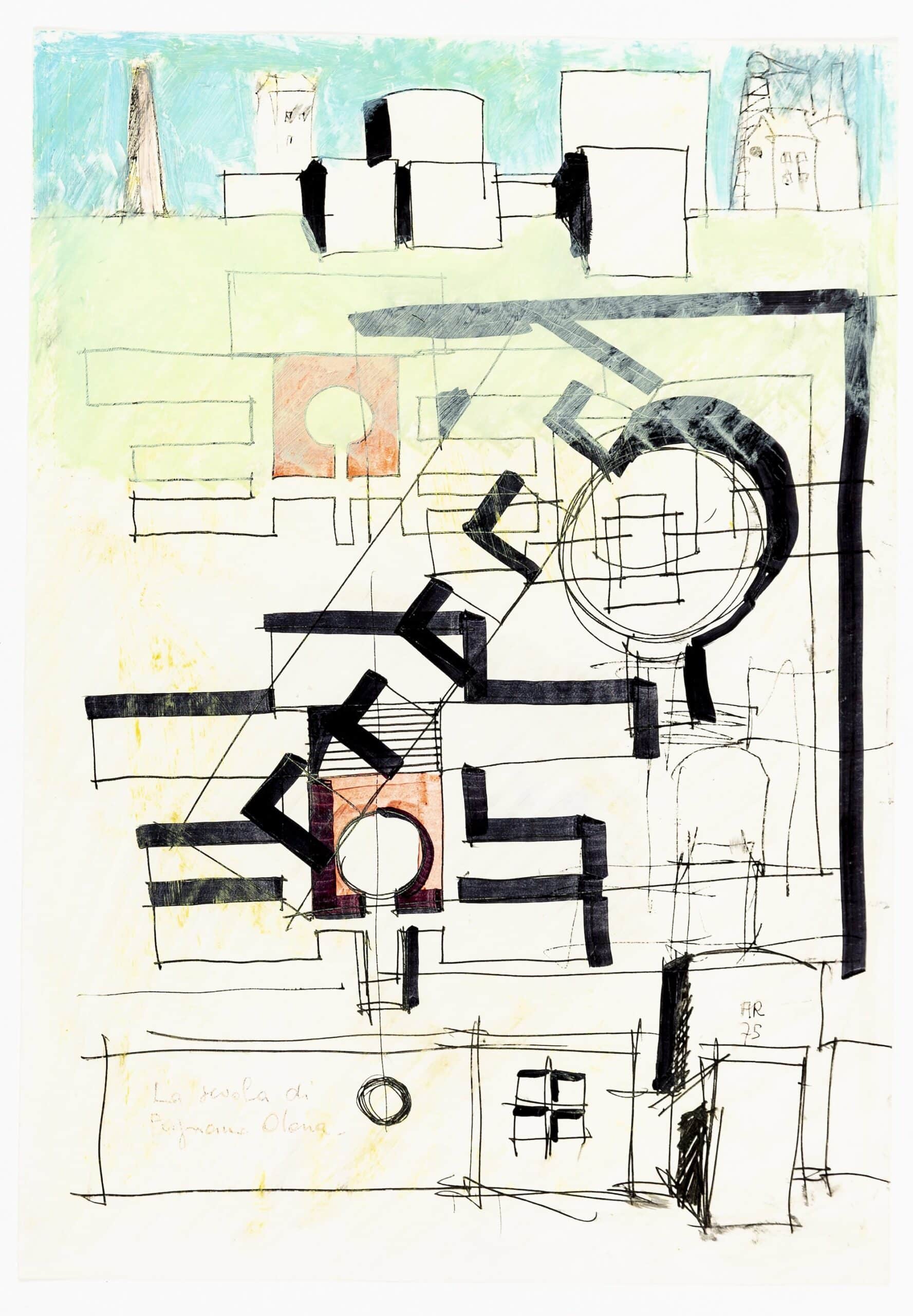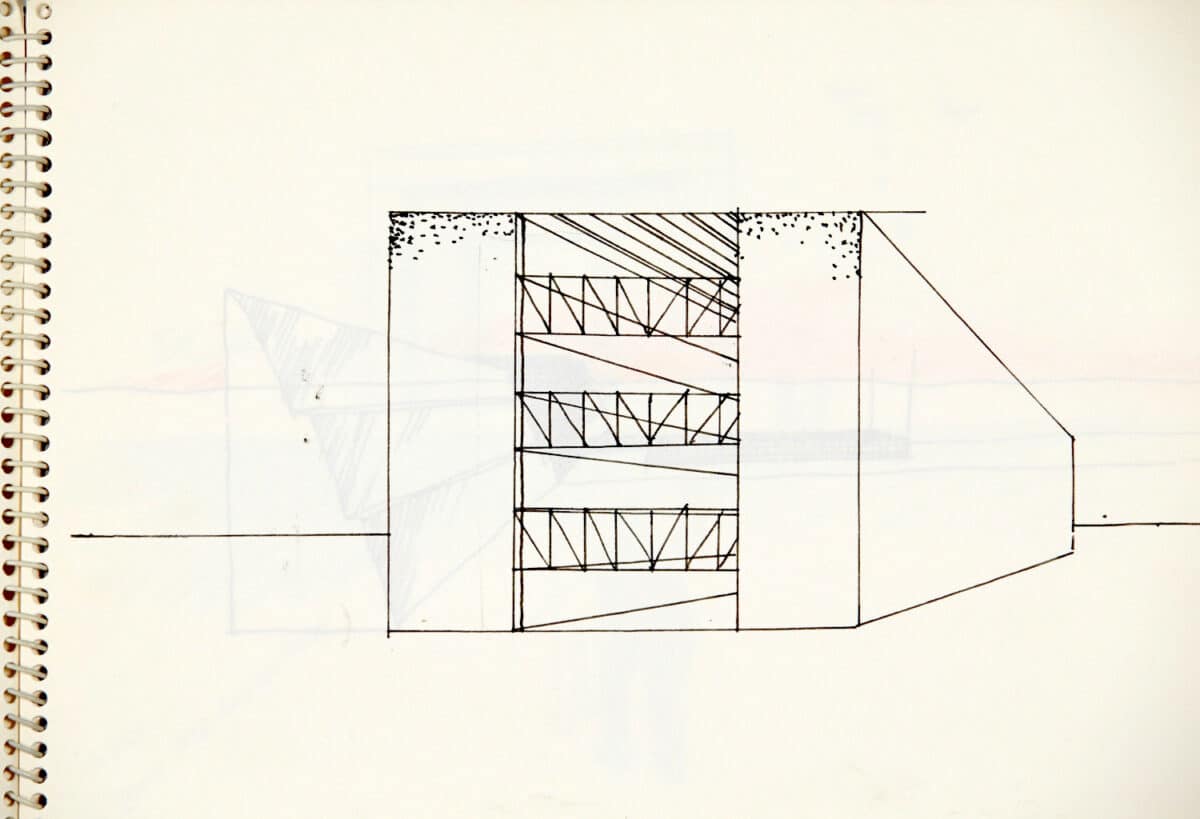Drawing Powers 3: The Drawing in the Object
This text is the third in a series of five in which Fernando Poeiras (ESAD.CR/LIDA), explores the different powers of drawing within architectural design projects. Each text is illustrated with examples from the Drawing Matter Collection. Find the introduction to the series here.
It was the drawing that led me to architecture, the search for light and astonishing forms.
– Oscar Niemeyer
Sometimes architects talk about the ‘drawing’ in a building, a landscape, or even animals and people. The drawing experience they describe can help us to identify and understand another set of drawing powers. These are the capacities added by what many authors call the ‘drawing language’ or ‘visual medium’, [1] but which, here, are studied in terms of drawing styles and drawing crafts.
When considering drawing language, we continually run the risk of ignoring concrete practices and thus subsuming them into a common, but too generalised, ‘drawing language’. There is also another risk: that of placing excessive emphasis on visual perception; and of eliminating all the material conditions present in the process of drawing. When this occurs, the drawer is reduced to a great disembodied eye, and drawing merely becomes the formal language of the starting point and conclusion of a design.
Louis Kahn exercises a specific drawing language – akin to some gestalt theory principles; a theory that has become omnipresent in much drawing theory and practice. In drawing DMC 1382, strong contrasts, planes and shadows organise both perception and design. Kahn provides an example of drawing style as an optics, a style of visual language.

We can partly correct this distortion by understanding the ‘universal and formal’ vocabulary and grammar of drawing language as a particular kind of drawing language, but principally, by understanding the various drawing styles and drawing crafts themselves.
Some manifestations of drawing language in a design are clear and have consciously operative results for the drawer. Hence, the productive value of a drawing may be found in the different drawing vocabularies and grammars employed, and in their self-reflexive power. This is illustrated by the many ways in which the two dimensions of drawing are transformed into a three-dimensional construction, or by use of geometric abstraction to provide both operative simplification and to make a complexity of forms intelligible – a means of searching for the ‘whys’ and ‘hows’ of forms. Still, other examples can be found in the qualities and values of elements and composition in drawing and their relationship with construction. This self-reflexive capacity of drawing can also be traced in the different drawing poetics that constitute the most legible signature of many practitioners.
Let us now consider drawing styles and drawing crafts. They are means of formal and material organisation that allow the broadening of perception and sensitivity and reveal new ways of understanding and imagining. The interaction and involvement between the drawer and the drawing are now in the relationship with the specific medium of drawing and the translation operations it enables.
Fundamentally, in design, drawing language, drawing styles and drawing crafts are material systems for translating. The creation of ‘models’ – a core operation of design practice is a kind of translation, in which different modes freely, but only ever partially, translate reality and ideas into a design. Some results of this operation are easily visible in drawing, but others are more subtle and must be carefully discovered or inferred.
Drawing crafts are inseparable from both the materiality of drawing – the materials used, the instruments, tools, the sequence of actions, etc. – and from their contextually specific materiality, whether that materiality is introduced by the drawer’s body or by the physical environment in which they are drawing. Craft styles are not the impersonal, repetitive, isolated, and economic procedures of ‘industrial’ drawing styles. [2] Although experience indicates otherwise, we still tend to ignore everything that happens to the drawer and to the design during the material interaction and involvement in a particular drawing craft.
In this drawing by James Gowan (DMC 3347.6), the relationship between a way of seeing, thinking, and imagining, and the crafted drawing style of the architect becomes manifest. Gowan’s registers are not sketchy, they are assertive and clear, and his inventive play with drawing forms is generally at the service of architectural invention. In this case, they seem to be playful techno drawings whose central theme is the volume within an imaginative free play of construction.

In Aldo Rossi’s drawings we find another crafted drawing style. If the metaphor is admissible, his drawing is that of a painter-architect in which the expressive qualities of forms and volumes are explored, using other instruments. This enables different types of inscriptions, the inclusion of colour, different materials, and a different visual vocabulary in which geometry meets a type of ‘expression’. In the drawing DMC 1096, the organisation of the plan synthesises all these aspects in a solution of great expressive and chromatic intensity.

To illustrate this argument, consider how the types of paper change during the design process. The consecutive changes in its size, colour, texture, and degrees of transparency all constitute the material conditions for the process and for specific translations. It seems evident that perception and sensibility are affected in each of these successive changes. The ways in which ideas are induced by these movements are less noticeable, but all these material changes and corresponding transitions in the design sharpen the designer’s attention and intentions. Designs are transformed throughout the elaboration of these consecutive material versions, and all the events that ensue from material changes during the process, also provide a time-period and rhythm more conducive to the maturation of ideas.
Pages of Gowan’s sketchbook – for example sketchbook 7, 2658.7v–8r – show the material organisation of space surpassing (pure) visualisation. Through collage, drawings are assembled according to constructional and economical values, presenting an architectural composition on paper. As with any craft, a drawing craft style can provide profound insights into the material aspects of practice and the individual draughtsman.

The productivity of craft and styles is irreducible to the solitary draughtsman, and can only be fully appreciated in the living process of design; but we find many traces of it in the drawings, and in some drawing strategies and techniques that deliberately take advantage of it.
In many drawings by Adolfo Natalini we find a specific drawing style at the intersection of the graphical and the geometrical. Sometimes Natalini employs an improbable line to assist a geometric sketch (sketchbook 10, 2083.12), well-suited to visualise his solutions. This illustrates the ability of drawing to adapt to the singularities of the making, understanding, and imagining of each individual drawer.

Adolfo Natalini, page from a sketchbook of architectural and furniture designs, 1969. 175 × 250 mm. DMC 2083.12.
Many criticisms have been levelled against drawing because it can take the design process away from what is essential to it: understanding and imagining a given construction. According to these critical arguments, the ‘drawing language’ can easily distract the designer from the essential task, and may even create a series of pitfalls. [3] The architect or the designer may explore possibilities of a drawing that are impossible in the real world, or evaluate a solution on the strength of the drawing alone, etc.
Experiences of the ‘drawing in the object’ reveal that design solutions can be explored within the scope of drawing language, styles and crafts. However, drawing may lead to experiments that, by overemphasising visual relationships and perceptions, underestimate the real complexity of a design. [4] For this reason, it is also necessary to understand the specificity of drawing styles and crafts, as they enable translation operations to occur that develop and strengthen perception, sensibility, understanding, and imagination throughout the design process.
Notes
- Mandredo Massironi, The Psychology of Graphic Images: Seeing, Drawing, Communicating (Hove: Psychology Press, 2001).
- C. Wright Mills, The Sociological Imagination (Oxford: Oxford University Press, 2000).
- Bryan Lawson, How Designers Think: The Design Process Demystified (London: Routledge, 2006).
- C. T. Mitchell, Redefining designing: From Form to Experience (New York: Van Nostrand Reinhold, 1993).
